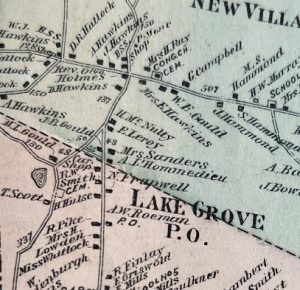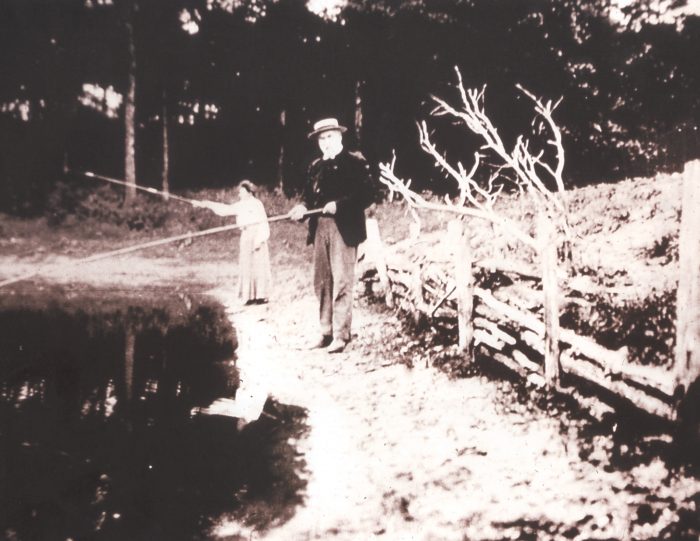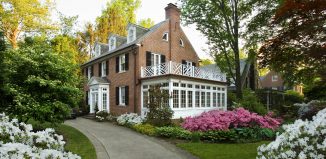A Small Taste of History from the Middle Country Public Library: Gould’s Pond — Is it a Pond a a Kettle?
Amongst the Middle Country Public Library’s many historical artifacts are a few that explain just how far the area has come from its pastoral roots. The picture and story below comes courtesy of a collaborative effort among the librarian staff.
Gould’s Pond is both! It is a pond, a body of fresh water, but it is also known as a kettle pond. This name is used for ponds or lakes which form when very large blocks of ice left by glaciers break off, stop moving and melt.

This is exactly what happened when the glacier which formed Long Island reached its southernmost point on its journey down from eastern Canada over 20,000 years ago. There are many kettle ponds and lakes on Long Island, the largest of which is Lake Ronkonkoma. Lake Ronkonkoma is the largest freshwater lake on the Island, measuring approximately two miles in circumference. Fresh water has always been a valuable resource, and Gould’s Pond is one of our local treasures.
People have always chosen to live near water, and Long Islanders were no exception. Middle Country Public Library has some historic atlases which show exactly who lived near the pond back to the late 1800s. Here is an image from Fredrick W. Beers’ “Atlas of Long Island, New York” published in 1873. The pond is represented by a circular feature at the left side of the map.
Individual family names were plotted on older maps like this one. Here we can see labeled homesteads surrounding Gould’s Pond and the names of families who lived on Hawkins Avenue, Middle Country Road, Moriches Road and Saint James and others.
One of the earliest settlers we can name was Morgan Lewis Gould, whose home appears above the pond which bears his name. In 1886, the Town of Brookhaven paid Morgan Lewis Gould and his son, Henry Lewis Gould, $5 to maintain an unobstructed pathway connecting to the main road, four rods wide (approximately 60 feet), for public access to the pond, so residents could bring their livestock to water and to use it for general household purposes.
Two historic houses are still situated near the Pond today, most probably the M.L. Gould and T. Scott homes shown on our 1873 map.
In later years, with home wells or piped water, this freshwater pond was used more for leisure purposes, including ice skating and fishing. But during the 1880s the pond still had a practical purpose – as a source of ice before refrigerators and freezers were commonplace.
In this case, ice from the pond was harvested. It was cut by hand from the surface of the pond and stored for later use. Two separate icehouses were built along the shores of Gould’s Pond, used to store this ice during the warmer seasons.
The large chunks of harvested ice were tightly packed in these icehouses so they would not easily melt. Sometimes, straw or sawdust was used for insulation, and in many cases, icehouse foundations were built below ground to keep the ice frozen year-round. Research shows that after World War I, the icehouses were no longer necessary and were dismantled.
Today, Gould’s Pond is used for hiking, nature watching and fishing. A gentle hill which is popularly used for sledding lies next to the pond. This hill was most likely scooped out by that same glacier which formed the pond so many years ago. You can find Gould’s Pond at the corner of Moriches and Saint James Roads in Lake Grove, where a beautifully lettered sign marks its spot.







